3 Simple Rules to Help Your Piano Students Play Musically
This post may contain affiliate links. If you purchase something through an affiliate link, I will receive a small commission at no cost to you. For more information, read the disclosure statement here.
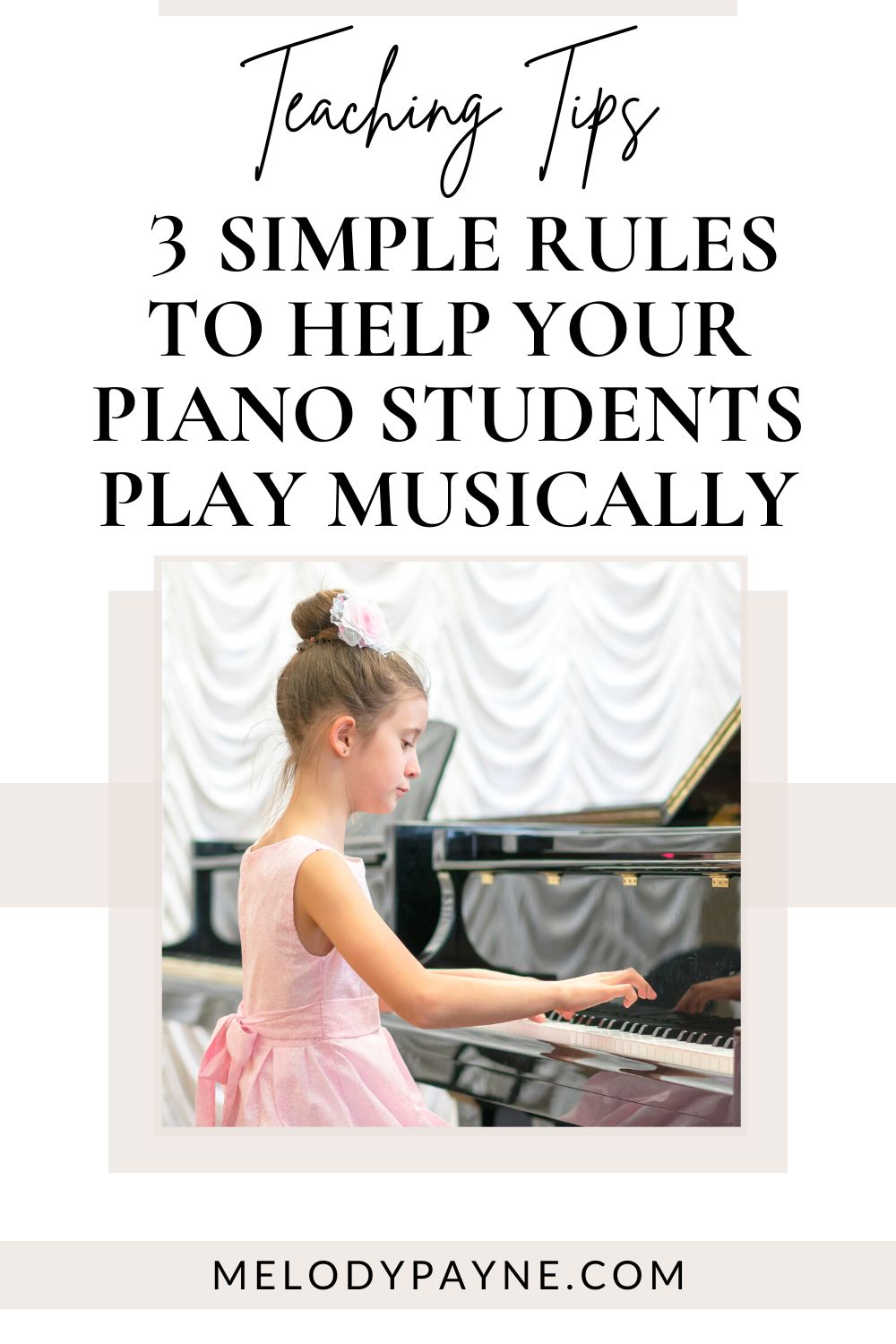
Are your students struggling to play musically? Are they unsure of what “playing musically” means? By following these 3 simple rules, you can increase your students’ musicality instantly and help your piano students play musically in a matter of minutes!
If your students follow these 3 simple rules, they will be on their way to learning how to create magical, musical, moving performances every time they play the piano. Recital performances will improve, lessons will be more fun, and home practice will be much more motivating!
Check out these 3 easy piano teaching tips and help your piano students, even young beginners, learn how to play musically from the very first lesson.
What does “play musically at the piano” mean?
In recent months, I’ve heard a lot of teachers discussing and wondering how to help students play with emotion and feel their performances to create something magical.
I wondered that myself for a very long time, and during my early years of teaching, I said things such as, “Play with feeling” or “Play with emotion” or “Play from your heart” because those things had been said to me by teachers when I was growing up.
However, I have always been a concrete-sequential learner and I just couldn’t figure out what my teachers meant when they said things that were so abstract. So I just did my best, always wondering if I was measuring up to their expectations of “playing with feeling”.
Eventually, things naturally started to click, and I began to understand that “playing musically” meant to play in a way that allowed the music to be expressed in the most moving and natural way possible, but those early years definitely left me feeling a bit unsure of myself with regards to playing musically.
Fast-forward many years to today, and I’m going to share what’s working for me and for my students right now.
Rather than giving them abstract directions like the above statements, I have found that giving them concrete directions helps them know what to do when they haven’t yet learned to tap into their own emotions, feelings, and natural musicality.
Concrete statements help students begin to understand what “music does” and what “music wants to do” in a general sense, and how they can use that knowledge to play musically, no matter what they’re playing.
With these 3 simple rules, you can help your piano students develop a deeper understanding of music so they can play musically in just a few minutes.
How can you help your piano students play musically at the piano?
The concrete directions for playing musically are the “music rules” that I teach my students from very early on in their piano lessons. We review and review until these rules become healthy habits, which evolve into beautiful and musical performances that have made me cry many times in piano lessons.
I’m thrilled when that happens! But my students don’t quite know what to do when Mrs. Melody has tears glistening in her eyes and mom is sitting on the sofa speechless, wiping the tears away. Those moments are beyond magical.
How can you create such depth and musicality in your own students’ playing? How can you help your piano students play musically every time they sit down at the piano?
If your students follow these 3 simple rules, they will be on their way to learning how to create magical, musical, moving performances every single time they play.
Just imagine the depth and musicality that will be evident in their performances when you help your piano students play musically. It will be phenomenal!
Rule Number One to help your piano students play musically
The last notes of the piece are usually the softest.
I know, it sounds so simple, but it’s truly a very important part of teaching students how to shape a phrase. During a beginning student’s first lesson (the mini-lesson held during the student’s interview), I teach students how to play “Billy Boy” by rote.
“Billy Boy” is a brilliantly-composed black key piece from the Finger Starters book by Lynn Freeman Olson. It’s a fabulous piece I use to teach quarter and half notes, steady beat, form, ritardando, and Music Rule #1 (decrescendo), all during the first lesson. I don’t tell students the musical terms just yet – we simply talk about what the music wants to do.
I teach the piece by rote, then we play it as a duet. I’ve memorized the accompaniment so that I don’t need to play from the book, and that makes the moment feel so much more organic. We definitely make the most of this short piece of music!
The parents LOVE that their child can play a piece in less than 10 minutes. The child sounds amazing, and when we add Music Rule #1 to the end (a nice decrescendo) then go even further and add a ritardando, I’ve truly seen parents get emotional during the interview. It’s beautiful.
I believe this is the easiest way to help your piano students play musically, especially when you model how the decrescendo should sound, then play the duet together so your students can feel the gorgeous decrescendo and ritardando combination.

Rule Number Two to help your piano students play musically
When the notes are going higher, get louder, and when the notes are going lower, get softer.
I introduce Music Rule #2 to students after they have become comfortable with Music Rule #1.
Then we look for the shape of the melody within their pieces. They learn to draw the “get louder” and “get softer” symbols throughout their pieces. Then they learn to play louder and softer and begin shaping phrases.
I make a huge deal of how amazing the music sounds when they play this way. The way they are playing, combined with the grins on their faces, let me know they really understand what to do.
Of course, this is all presented to them in a very concrete, precise, and logical way, in incremental steps that they can follow, without giving them the names of the symbols until a week or two later.
(For more information on thinking and teaching music precisely, I highly recommend “Intelligent Music Teaching” by Dr. Robert A. Duke.)
I truly believe that teaching my students these ideas of musicality as concrete rules is a necessary step towards independent musicality, which is my goal with all of my students.
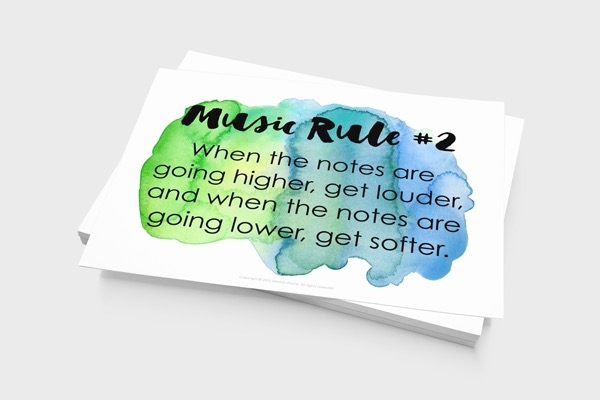
Rule Number Three to help your piano students play musically
The highest note is usually the loudest.
Now that Music Rules #1 and #2 are solidly in place, I introduce Music Rule #3: The highest note is usually the loudest.
Music Rule #3 introduces the idea of a phrase’s focal point and gives students the opportunity to understand how to shape a phrase as it moves towards the focal point and away from the focal point.
I also tell my students that we’ll draw an arrow to this note because it’s at the top of the mountain, and that helps us know how far we need to climb.
I was introducing focal points to one of my little girls recently, and coincidentally, she had been studying Mount Fuji at school that day. She immediately named all of the the focal points in her piece Mount Fuji.
Then she declared that she had to climb and climb, louder and louder, to reach the top of Mount Fuji. Once she reached the top, she would yell “Hooray!”, then go down the other side, softer and softer as she went.
It was especially adorable that the first focal point we were discussing was Treble G. She lovingly named that focal point “Mount Foo-G”. She’s such a cutie 😊
The idea of focal points definitely came to life for her that day. I had no doubt she would always remember how to find them in her music and be able to shape her phrases both towards and away from the focal points to create a more musical performance every time.
These three music rules really help my students achieve a deeper level of musicality, and I hope they will help your piano students play musically too!
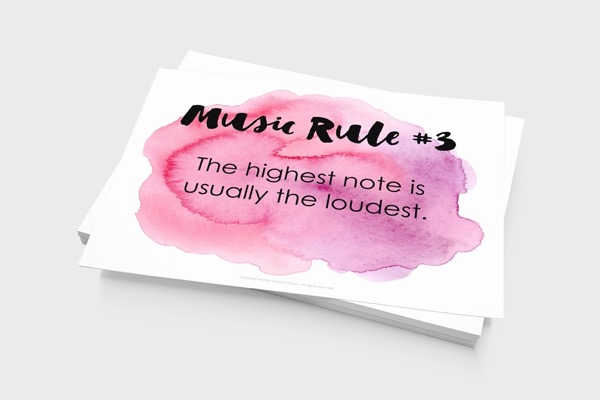
Help your piano students play musically today!
These 3 simple yet profound rules are easy enough for any student to grasp and follow. They’ll give even your most musically timid kiddos the opportunity to wow you with their new ability to play musically.
When you help your piano students play musically, their performances will sound more mature and beautiful, they will feel a deeper connection with the music, and they will discover a deeper sense of accomplishment with their new level of musicality.
Once students become accustomed to these music rules and are comfortable using them on a daily basis, the abstract idea of playing musically begins to permeate them. They naturally begin to make the shift from playing musically in a concrete way to playing musically in the truest sense of the word.
It’s extremely important for us as teachers to instill not only a love of music in our students, but a desire to play musically and beautifully, a desire to create profound musical experiences for others, and a desire to connect more deeply with others and with the music they’re playing.
You can continue the journey of musicianship throughout a student’s time in your piano studio as you help your piano students play musically, starting today, by downloading the free printable watercolor posters and postcards that you’ve seen throughout this article. Download 3 simple rules that will help your piano students play musically.
How do you help your piano students play musically at the piano?
What are YOUR tried and true aids that are your go-to tips to help your piano students play musically? Let us know by leaving a comment below.
More blog posts on piano teaching:
- 9 Essentials to Include in a First Piano Lesson
- Cultivating Motivated Students in the Piano Studio
- Go with the Flow in Piano Lessons
SaveSave
SaveSave
SaveSave
SaveSave
SaveSave
SaveSave
SaveSave
SaveSave
Don't miss out!
Follow us on Facebook and Instagram, join our Facebook group for piano teachers, and subscribe to the newsletter to get helpful teaching tips, resources, and tutorials delivered straight to your inbox every week.
Melody Payne
Melody Payne
Welcome!
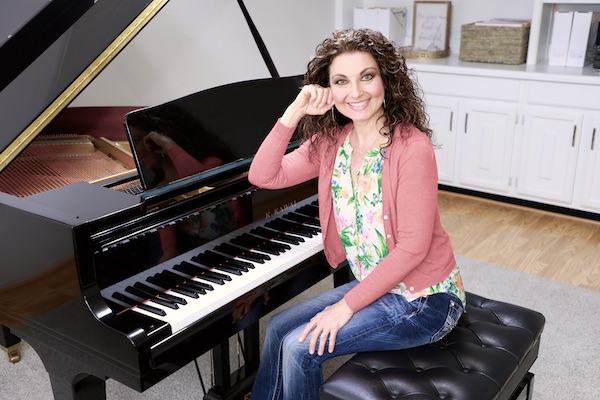
Hi! I’m Melody Payne, a pianist and piano teacher, educational resource author, a fun-loving wife to the most wonderful and talented hubby I could ask for, and a lifelong learner who loves to share. I want to make your life as a music teacher easier by writing and sharing helpful and relevant music teaching articles, and by creating educational resources with your very own students in mind. If you are a parent who wants to enroll your child in piano lessons, I’d love for us to get started building those skills that can give your child a lifetime of musical enjoyment!


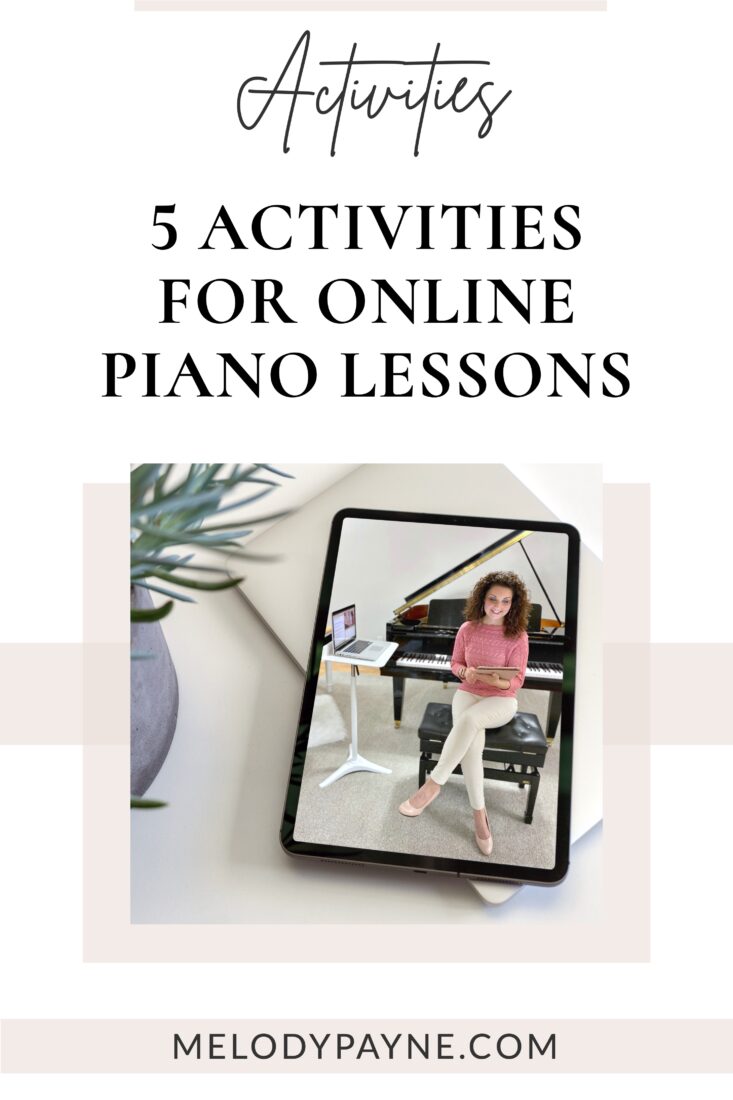
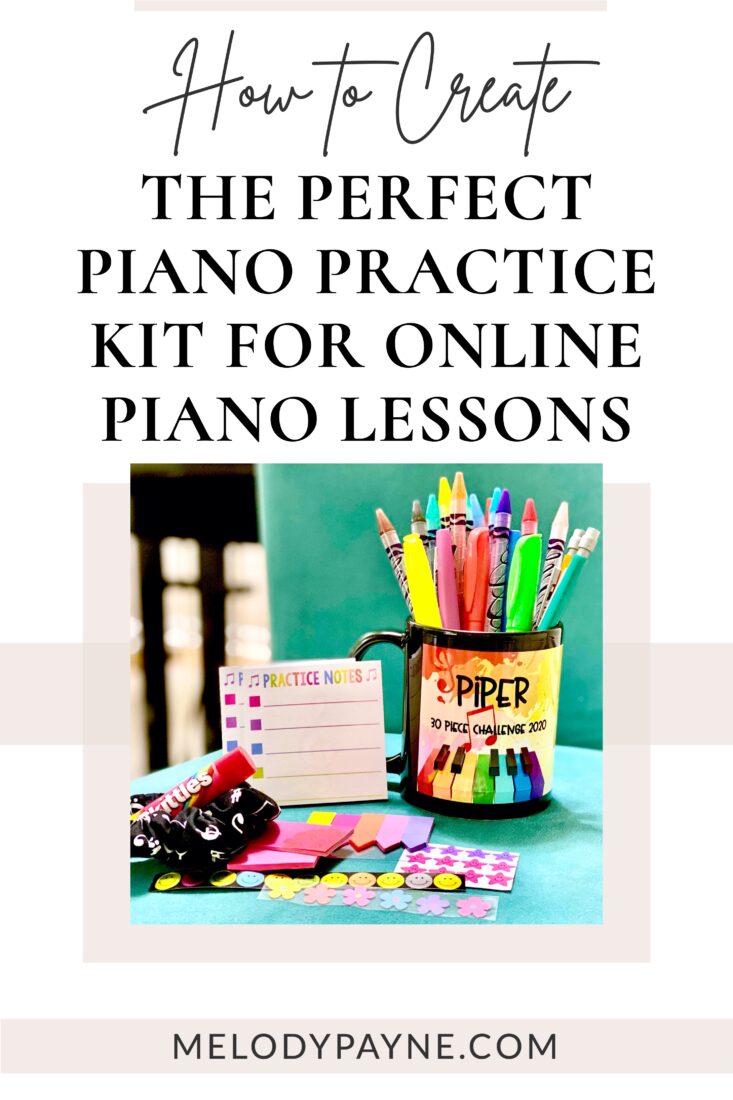
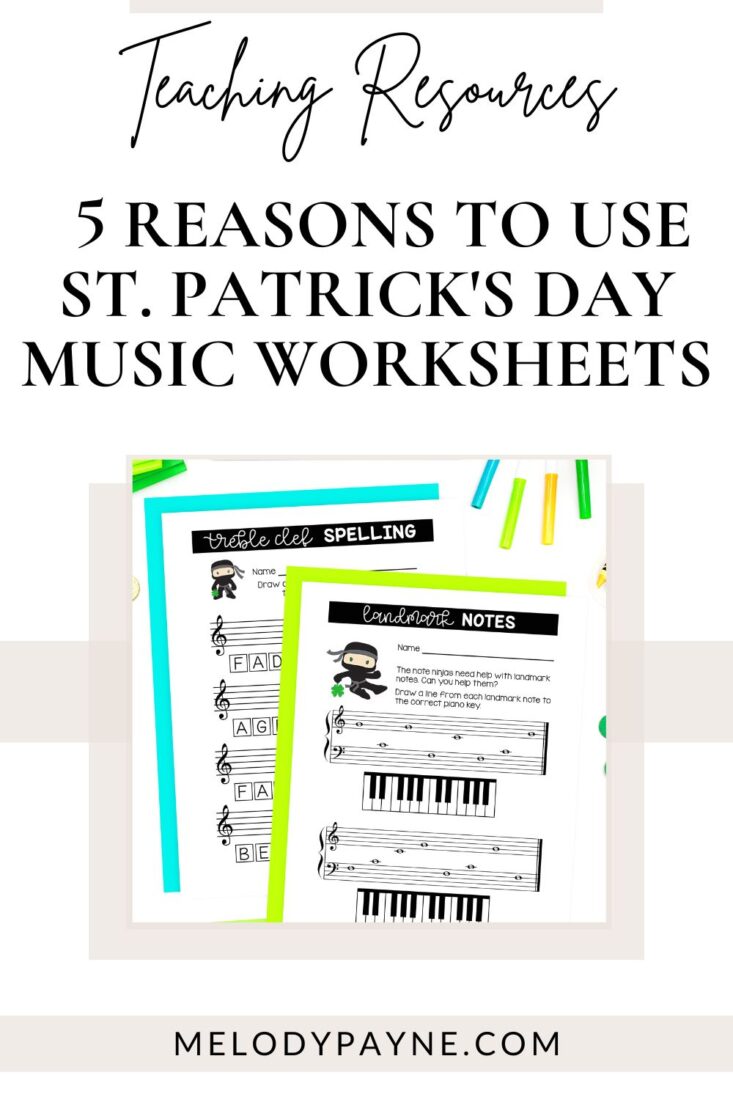

This Post Has 14 Comments
I have written my own rules, some similar to yours, that I use with my own piano and trumpet students. In short:
1. Emphasize the meter (downbeats)
2. Long notes and repeated figures must change over time. (cresc. and dim.)
3. Hit your marks (high point and destination points of phrases)
4. “Say” something. (What is the story, message, mood you’re portraying?)
Thank you so much for sharing these! I think the more ways we can give our students to play musically, the better 🙂
Thanks, these are very helpful rules!
My pleasure, Milla! I hope your students enjoy them!
Thank you for these easy to teach and understand rules! I have recently moved to a new (and very culturally deprived) community. I have taken on many beginning students. It is easy to get so focused on the technical points of music for beginners: finger numbers, counting, note reading, etc. that musicality is often overlooked or postponed until much later. Thank you for reminding me that even beginners can play musically.
Absolutely! I 100% believe that beginners can learn to play musically from the first lesson, with proper guidance. Best wishes in your new location!
I wasn’t taught this as a student but like you said, I grew into it as I progressed as a musician. I’ve used these rules for several years. I use the analogy that shaping the phrases is the “breathing” of the music. Taking in the breath is the crescendo then letting the breath out is the decrescendo. As I sing or play an example (with much exaggeration!), the kids have a blast trying to make their music breathe!
That’s an awesome way to think about it, Sydni! Plus, with the breathing analogy, you can get students’ breathing involved with their playing. A win-win! I love the ocean, so I tend to talk about the waves coming up on the beach for a crescendo, and receding back into the ocean for a decrescendo. That works well too! Thanks so much for sharing! We can all benefit from great ideas like yours!
Melody
Thank you for sharing this article! It is very practical and helpful, and I will start using these with my students!
I’m so glad you enjoyed it, Sheree! I’m sure your students will have a great time learning to use the rules in their playing. Have a wonderful day of lessons!
This is a fabulous article! Thank you for sharing. 🙂 Since you say “usually” with each of these rules, is it safe to assume that any exceptions occur when there are specific markings in the music to do so?
Thanks, Karissa! Yes- sometimes there will be specific markings indicating something that doesn’t follow these rules (a huge crescendo at the end of a piece, for example). But generally speaking, they are the go-to rules, the perfect starting place, and they can easily be broken, depending on the circumstance 🙂
The three Golden Rules of playing a song on the piano. I enjoyed your insight of why these rules are so important. I was taught these rules when I began piano lessons many years ago and I still use them today.
Thank you so much, Rae Lynn. They definitely make a performance more magical and musical!